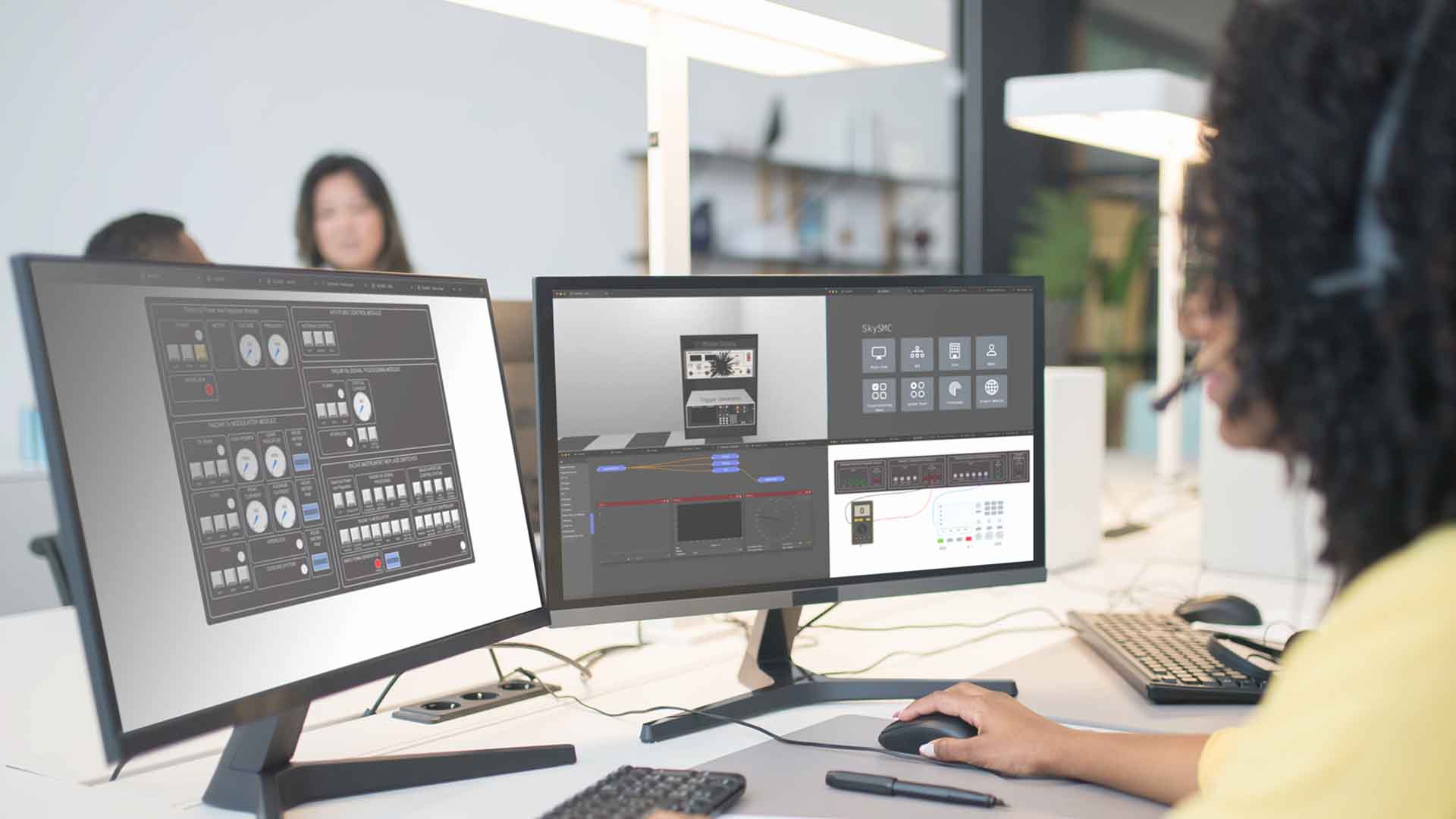SkySMC is a modular System Monitoring Control (SMC) solution. It offers customizable configurations and includes a pedagogically enhanced monitoring environment and a simulated Air Traffic Control (ATC) environment. Integrated with SkyRadar's virtual and physical training laboratories, it connects to special training infrastructure and allows for remote monitoring and control experiments. Accessible from all computers within available laboratories, it meets the requirements of EASA's Easy Access Rules for ATM-ANS (Regulation (EU) 2017/373).
SkySMC can read many standard message formats like SNMP, JSON, MQTT or ASTERIX. It can connect simulated, virtual and real infrastructure into a common augmented reality. Any external device with OID address can be connected.
SkySMC, can monitor, switch and parametrize. It allows to include errors and to log and document student performance.

Depending on the configuration, SkySMC can be used to practice on the following use cases, found in the EASA Easy Access Rules. The use cases given are just examples.
SkySMC includes the following views:
In the block view, the user can create the SMC logic, in a drag and drop approach. It includes
The Distributed Control System view is a view helping to arrange functionalities spatially, geographically or functionally.
The learner has access to an editor, where he can create and connect the spatial or functional representation of a system with the logic from the block view.
The Site-View provides a Virtual Reality Environment, where the devices can be logically linked to the DCS logic. Systems can be switched on/off, parameterized or replaced in the virtual 3D world.
It gives the trainee the possibility to "walk" through the virtual world.
The admin view allows to set predefined scenarios. The trainer can log the trainee's performance. The system logs the student's sequence of action with time stamps and information about the steps made (press a button, read a value). The system also shows the fault scenario which is active during the exercise. The teacher can set several fault scenarios concurrently
The troubleshooting panel is an implementation of the DCS view. It is a functional arrangement of buttons and gauges, allowing to operate a monitoring and control system.
The socket panel exists as real device in the SkyRack ATM infrastructure and as virtual instrument in SkySMC. It provides voltmeter and oscilloscope to measure system conditions. A real-life clone of this virtual instrument exists in the SkyRack hardware module
SkySim includes a small version of FreeScopes. This allows to visualize and measure the raw signals as well as the processed signals
SkySMC allows to create various servers like a webserver. The Website view allows to visualize the websites and to create real-life behaviour like load
This package includes logic and objects to work on Surveillance towers.
A physical environment represents in a simplified way a typical ATC facilities.
This subset of the laboratory shall help to gain hands-on experience in bug-discovery and fixing. It includes:
SkyRadar's base unit is a close range training and research radar for indoor and outdoor experiments.
At the leading edge of security provision within its key markets, Cryptomathic closely supports its global customer base with many multinationals as longstanding clients.
SkyRadar develops innovative radar training solutions and simulation systems, empowering education, research & professional training in aviation and defense sectors.
All rights reserved by SkyRadar 2008 - 2025


SkyRadar Consortium
Email: sales@SkyRadar.com | Website: www.SkyRadar.com | © [2025] SkyRadar